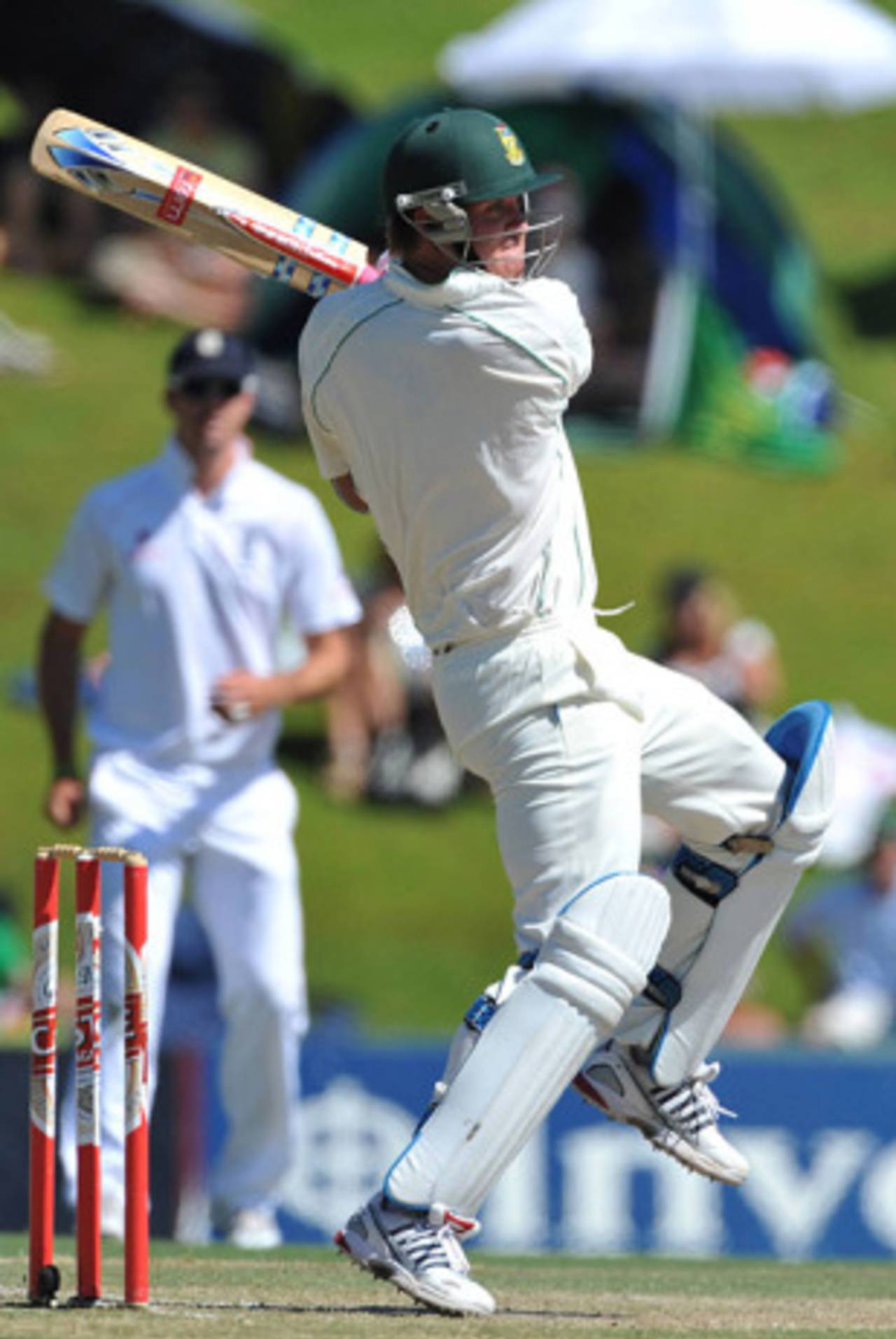One man will have watched South Africa's batting performance and been immensely satisfied. During his seven-year reign as England coach, Duncan Fletcher made a mantra of ensuring that his bowlers could contribute with the bat, and now that he's crossed the floor to join the South Africa set-up, he was in position to savour every run their lower order managed to eked out to edge them over 400.
From the moment he witnessed Alan Mullally, Phil Tufnell and Ed Giddins line up at The Oval in 1999 - the last match before his reign began - Fletcher set out an insistence that he wouldn't accept genuine rabbits in his batting line-up. His methods helped England secure some of their most famous victories. From Dominic Cork and Darren Gough at Lord's in 2000, to Ian Salisbury in Pakistan later that year, through to Ashley Giles and Matthew Hoggard against Australia in 2005.
Now that Fletcher is wearing the green tracksuit of South Africa, it is their lower order that has come under his radar. The early evidence suggests he is being successful. When South Africa beat Australia in Melbourne last year to take the series, Dale Steyn made a crucial 76 at No. 10. Now Fletcher's work has meant his old team had to toil through more than five sessions to wrap up South Africa's innings. When Kallis went in the seventh over of the day and JP Duminy was dismissed for 56, England would have expected to be batting well before tea.
Around the world, lower-order runs have become the expectation rather than the exception. Gone are the days of Tufnell, Malcolm and Courtney Walsh. Chris Martin is keeping the spirit alive with his endless run of ducks for New Zealand, but tail-end batting is now a serious business. Some say the game is poorer for it, and there was something wonderfully liberating about watching Malcolm swing blindly at a rapid red object, but the license to hit and hope is a thing of the past.
The likes of Daniel Vettori and Mitchell Johnson have taken No. 8 batting to a new level, but even further down than that, knowing which end of a bat to hold is now not an optional extra. Last week, Daryl Tuffey showed what can be achieved with a career-best unbeaten 80 against Pakistan, when his previous best had been 31.
South Africa have always had a good line in lower-order strength with players such as Dave Richardson, Shaun Pollock, Nicky Boje and Pat Symcox providing valuable runs, but the current crop don't have a Test fifty between them. Yet it still took England a further 44 overs from the fall of the sixth wicket to close out the innings.
Morne Morkel stood tall (in every sense) to set the tone for the tail. During South Africa's training camp in Potchefstroom he had one-to-one tuition with Fletcher to prepare him for the No. 8 slot. He drove James Anderson handsomely down the ground, but was rattled after taking a nasty blow on the chin against Graham Onions. The waft outside off stump that brought his downfall was a direct reaction to being shaken up. On his Test debut, against India in 2006, Morkel produced two vital contributions of 31 not out and 27 and his Test average should be higher than 12.52. With Fletcher's help it can start to head in the right direction.
Having Mark Boucher at the crease was important when the bowlers started to arrive because it meant they had more reason to occupy the crease. Paul Harris, who has worked hard on his batting since breaking onto the international scene, took his lead from Boucher, and was ready to take over as the senior man when the keeper finally fell. He doesn't have many shots, but he plays within his limitations and he was there for so long that cramp set in shortly before he dragged onto his stumps.
However, the most unexpected resistance came from the debutant Friedel de Wet. It's probably safe to assume England don't know too much about him, seeing as he was the surprise choice in the squad, but when Steyn went lame yesterday morning he was summoned into action. He opened his Test batting account by creaming his second ball, from Graeme Swann, through the covers and the dose was repeated later in the over before he also drove Onions down the ground. Not bad for a guy with a first-class average of 15.80 in his first Test. It will have also earned him a valuable early tick in Fletcher's book.
Andrew McGlashan is assistant editor of Cricinfo
